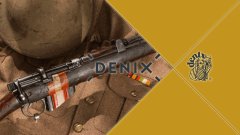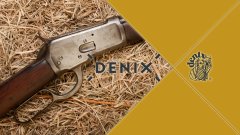Guns and their history: the SMLE Mk III rifle

Guns and their history: the SMLE Mk III rifle
On 26 January 1907, the iconic Lee-Enfield Mk III rifle, also known by its initials SMLE (Short Magazine Lee-Enfield), was introduced. It was named after James Paris Lee, the designer of the rifle's bolt system, and the location of the factory where it was designed, the Royal Small Arms Factory in Enfield, UK. It was the main rifle of the British Army and several Commonwealth countries during the first half of the 20th century and was used in both World Wars.
The Lee-Enfield rifle had appeared in November 1895 and was a derivative of the Lee-Metford, a mechanically similar rifle that used powder cartridges and combined James Paris Lee's bolt system with the rifled barrel designed by William Ellis Metford. The Lee-Metford had been the rifle in service with the British Army since 1888, but in 1895 the Magazine Lee-Enfield or MLE was adopted. This new rifle was a major breakthrough, as its bolt system was faster and simpler and the large-capacity magazine allowed 15 to 30 shots to be fired in a minute, making the Lee-Enfield the fastest bolt-action rifle of the time.
A year later, the Lee-Enfield Calvary Carbine Mk I (LEC) cavalry carbine appeared. And in 1899, modifications were made that led to the creation of the LEC Mk I*.
Both the MLE and the LEC were used in the Second Boer War in 1899. Although problems arose with the accuracy of the weapon and the lack of magazine loading, work began on a new version which resulted in the Short Magazine Lee-Enfield Rifle or SMLE introduced in January 1904. It was a lighter, shorter version that would replace both the MLE rifle and the LEC carbine. The barrel protruded only a few centimetres from the body of the rifle, a fact that was controversial at the time as it was considered not short enough for cavalry use and not long enough for accurate long range shooting.
Further improvements and simplifications to the SMLE led to the introduction of the SMLE Mk III on 26 January 1907. This rifle incorporated a fixed magazine slide and simplified rear sights, and the handguard and magazine were improved: it was capable of firing the new Mark 7 cartridges. These modifications were also carried over to the early MLE and SMLE models, bringing them up to date.
The SMLE Mk III was the standard rifle used during World War I by the British infantry. However, during the conflict it was too difficult to manufacture this rifle to meet the needs of the war, as demand had outstripped supply. Simplifications were sought to allow faster production and in 1915 a new version was introduced: the SMLE Mk III*. During the war, the SMLE proved to be a superior battlefield rifle.
In 1926, the British Army changed the nomenclature of the rifles, redesignating the .303-calibre SMLE as the No. 1 Mk III or III* Rifle. The Magazine Lee-Metford and Magazine Lee-Enfield, as well as early models of the SMLE, became obsolete. Although many Mk III and Mk III* were converted to .22 calibre and designated as No. 2 Rifle, and used for training cadets and new recruits.
In the late 1930s, the British government adopted the No. 4 Rifle, however, production of the No. 1 Rifle (formerly known as the SMLE) continued and was used during World War II by British and Commonwealth forces in North Africa, Italy, the Pacific and Burma. India and Australia maintained it as their standard rifle during the conflict: between 1939 and 1945, in India, the Ishapore factory produced over 600,000 SMLE Mk IIIs* and in Australia over 500,000 were produced. While the BSA Co. factory in the UK produced more than 250,000.
After the war, several upgrades were produced and the SMLE remained the British Army's primary rifle until the adoption of the L1A1 SLR in 1957, although it was retained as a training weapon for a few more years. Today, it is still used in the reserve forces and police forces of several Commonwealth countries, as well as in ceremonial roles.
What did you think of this post? You can learn more about weapons and their history in other posts on our blog.










